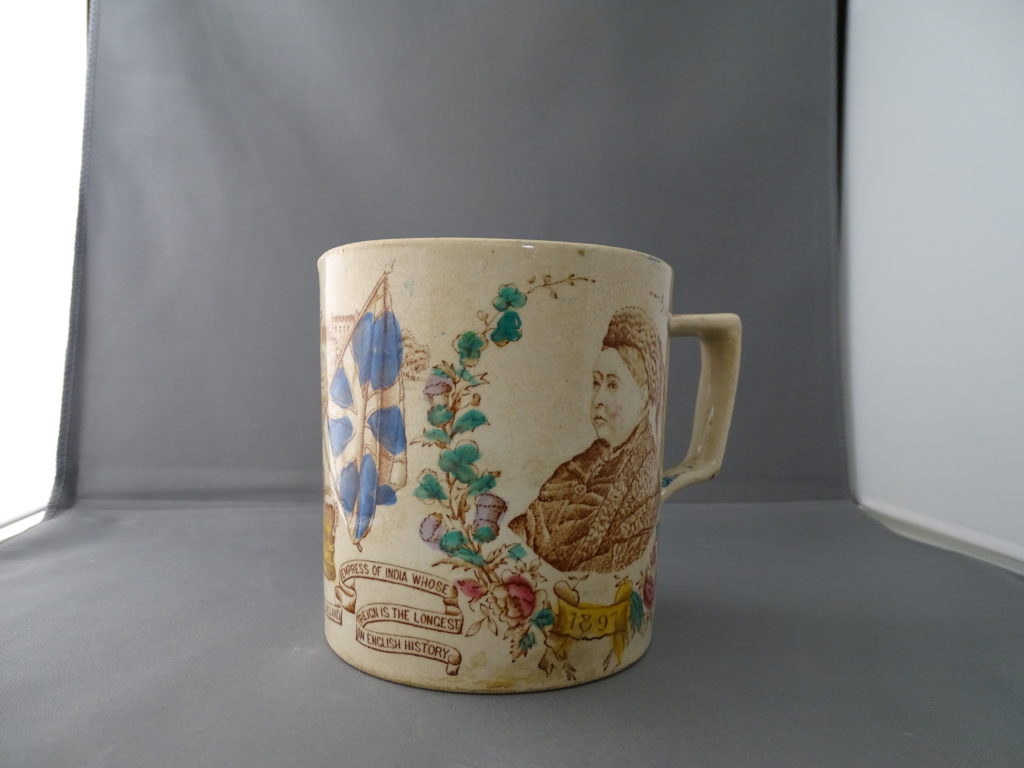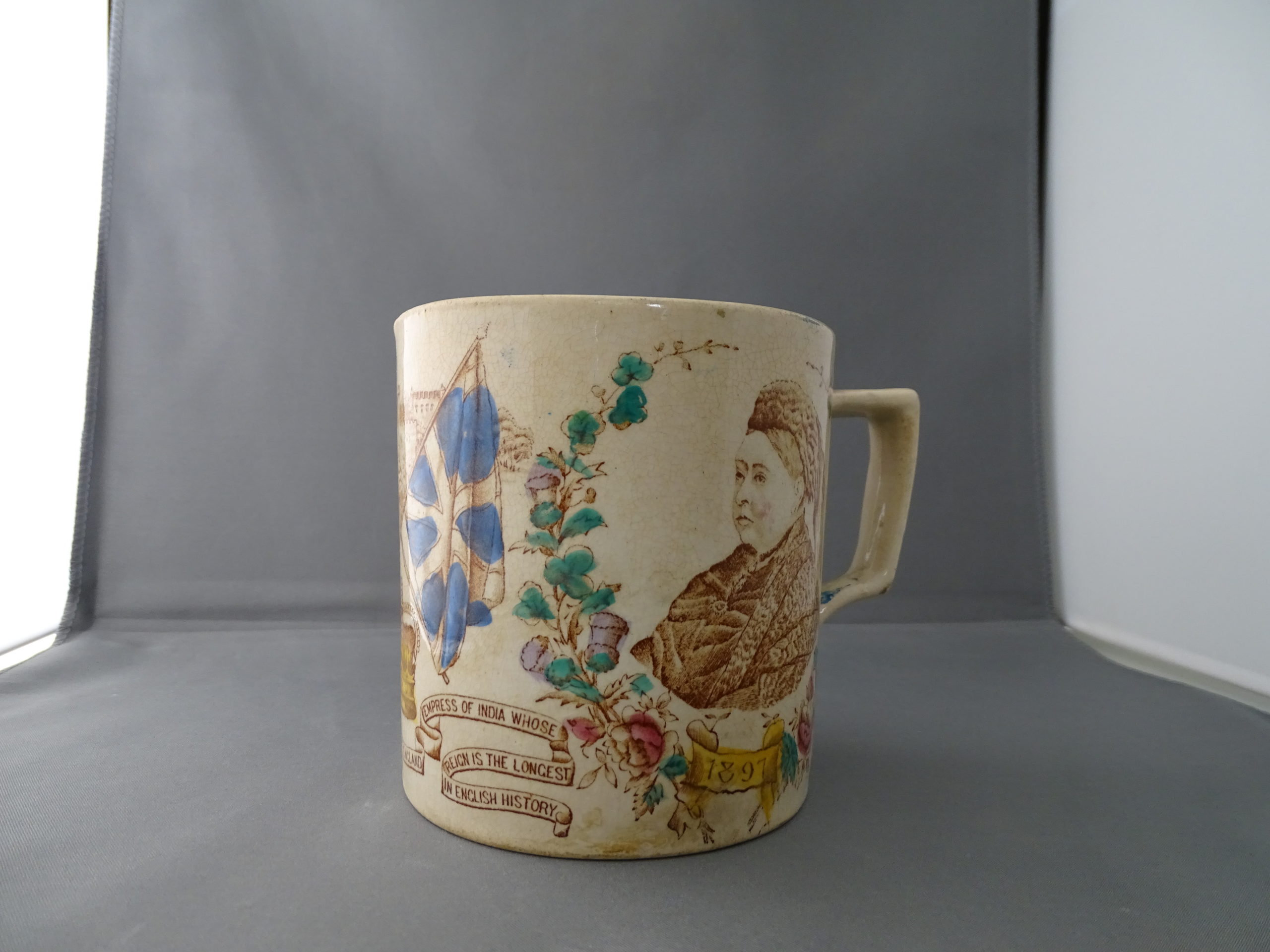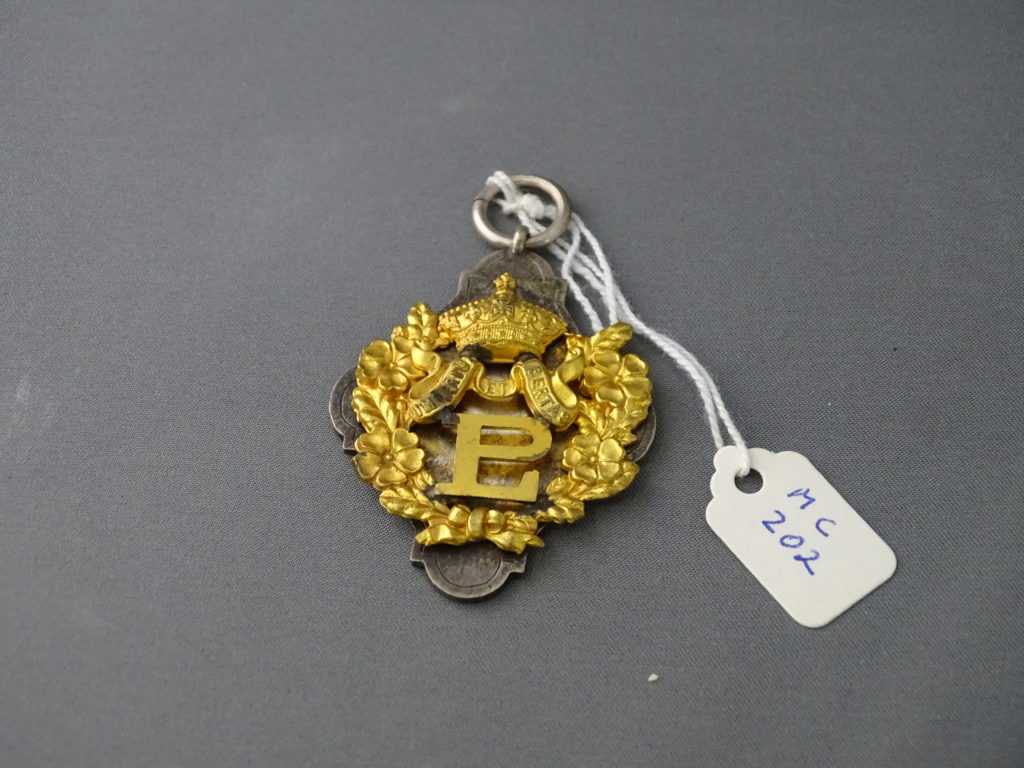Egham and the Empire: Royalty and Politics
Royal events were a chance to showcase and celebrate Britain’s Imperial Conquest to the wider British public. This jubilee mug [1] would have been cheap and easy to produce, meaning that members of the working class could afford to purchase them and endorse Britain and by extension its Empire. Knowledge about the British Empire could therfore be brought into the homes of ordinary people, even if they themselves had little to do with imperial rule. The jubilee of 1897 saw soldiers and colonial dignitaries from across visit London for the celebrations, which gave ordinary Britons the chance to see the people of ‘their’ Empire.


The links between monarchy and empire were showcased well into the twentieth century, and famous imperial and cultural events were often connected with the Royal family. One such example is the first ever radio broadcast, which was of an opening address by the King at the Wembley Empire Exhibition, held in 1924. This was a huge event that run for several months, showcasing various imports and technology from across the British Empire. The radio broadcast was a clever publicity stunt that combined the themes of empire, technology, and monarchy in order to create the impression of modernity and British progress.
In our photograph of the 1937 coronation celebrations [2], schoolchildren from Egham are shown dressed as the various territories of the British Empire. At their feet different types of food baskets can be seen, presumably to demonstrate the wide range of food that came from each respective colony. It shows the widespread drive to educate children about the benefits of Empire as well as the link between their own monarch and the other territories that they rule over.

today, Royal celebrations often broadcast their links to the legacies of Empire, mainly through the display and mention of the countries of the commonwealth. Most recently, the parade which took place as The Queen’s Diamond Jubilee including individuals holding a flag to represent each Commonwealth country.
Around the end of the nineteenth century a large number of societies were set up across Britain, many of which had pro-imperial beliefs at the heart of their founding. One of the more intriguing objects from our collections is a small yellow badge, which promotes the popular Primrose League [3]. Founded in the 1880s and continuing until 2004, it sought to promote a more democratic type of conservative governance in Britain, including suffrage for women. Its unusual name has its origins in the story that the Primrose was the favourite flower of Prime Minister Benjamin Disraeli. After his death, Disraeli became a cult-like figure within British culture. This Primrose League badge was easy and cheap to produce, meaning that it could easily have been distributed to a large number of people from the working classes. It is very likely that the community of Egham included members of the league, as the organisation included over one million members at its height in the late nineteenth century.



